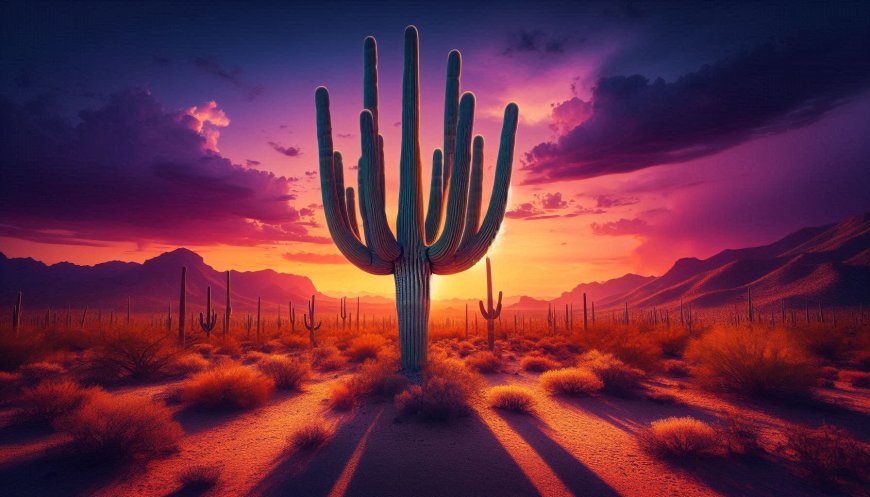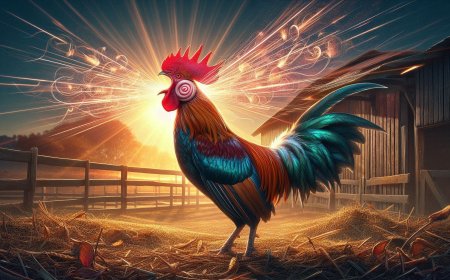Saguaro: The Silent Sentinel of the Desert
Discover the saguaro cactus, the silent sentinel of the desert, standing tall in the arid landscape during a stunning desert sunset, symbolizing resilience and timeless beauty

In the vast expanse of the American Southwest, the saguaro cactus stands as a living testament to the power of patience and perseverance. Towering over the desert landscape, it’s more than just a plant—it's a symbol of endurance and adaptability, a giant that embodies the spirit of the land.
The Slow Growth of a Giant
Imagine a tiny saguaro seed nestled in the desert soil, no larger than a pinhead. Its future as a towering giant might seem improbable, yet given enough time—sometimes up to 200 years—it will dominate the desert skyline. But this is no rapid transformation. It takes between 50 to 70 years before a saguaro grows its first arm, the distinctive branches that define its iconic silhouette. Witnessing this first arm might be something only future generations see, a reminder that in nature, slow and steady can win the race.
While the desert’s harsh conditions seem hostile, the saguaro has a secret strategy for survival. Its shallow roots, which spread widely just beneath the soil’s surface, are primed to absorb as much water as possible during those rare desert rains. Once the rain comes, the saguaro drinks deeply, storing water in its pleated flesh like an accordion. This reserve sustains the cactus through the long, dry months, allowing it to grow steadily, even when the desert sun is at its fiercest.
The Heart of Desert Life
But the saguaro isn’t just surviving—it’s a keystone in the desert ecosystem. Its towering arms and thick, waxy skin offer shelter to a variety of desert creatures. Birds like the Gila woodpecker carve out nesting holes in its flesh, using the cactus as a living high-rise. And once these birds move on, other animals, from small owls to swarming bees, take over these cavities, finding a safe home within the cactus.
When the saguaro blooms in the spring, it produces creamy white flowers that attract pollinators like bats, bees, and birds. Later, it offers a rich feast in the form of its bright red fruit, packed with seeds and moisture. For many animals, from coyotes to doves, this is a vital source of food in the unforgiving heat. And as these animals feast, they also help the saguaro by scattering its seeds, giving the next generation of these desert giants a chance to take root.
Nature’s Resilience
In the saguaro, the desert tells a story of resilience and resourcefulness. This cactus has turned the challenges of the desert into opportunities, adapting its structure and lifestyle to make the most of every drop of water and every ray of sun. It’s a reminder that even in the harshest environments, life finds a way to thrive—and sometimes, it does so in the most awe-inspiring forms.
As you wander through the Sonoran Desert, surrounded by these silent sentinels, you can’t help but feel a sense of awe. The saguaro cactus, with its ancient, slow-growing grandeur, embodies the spirit of the Southwest—timeless, resilient, and always reaching for the sky.
What's Your Reaction?






































































































